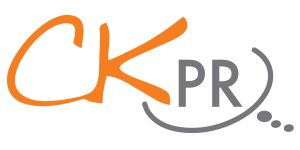5 ways to make journalists love working with you

Any public relations consultant will tell you a good working relationship with an editor or journalist is worth its weight in gold to their clients. This is because placing the right story in the hands of a good journalist can generate great exposure.
Typically, editors like to have an arm’s-length relationship with public relations consultants on the basis of editorial integrity but have a closer working relationship with the journalists they commission. Journalists are in a better position to gauge what editors might want, and which publication might pick up a story at a certain point in time. The result is they will often be able to seed stories across multiple publications, saving you time and getting results for your client.
But how do you nurture this public relations/journalist relationship? What are some of the mistakes you might be inadvertently making? Here we’ll share five ways you can supercharge your journalist relationships.
1. Drop the hyperbole
Yes, we love our clients, that’s why we work with them. But gushing to journalists in an email about how your client is ‘ground-breaking’, ‘the best in the world’ or a ‘game changer’ is sure to raise a few eyebrows (and not the impressed kind). Similarly, attempting to dress something that isn’t newsworthy in ‘wow’ words can come across desperate, and please ditch the exclamation marks.
This might not be intentional on your part, which is why some great platforms exist to identify when your copy is perhaps a little OTT with cliches and enthusiasm. Cliché Finder is one example that can help scan your copy and highlight potential cliches. The Hemingway App is also a great tool to ensure your copy is concise and easy to understand.
That being said, if your brand’s new product or service is genuinely a world-first, then you can get away with labelling it that way.
2. Speak to their interests
It might take a little extra effort but to supercharge your relationship with journalists, it’s important to understand their areas of interest and what might appeal to them. If they feel like you understand them, and you send stories that help get them paid or engage their publication’s readers, they’ll be more receptive to your pitches. In a way, you should think about journalists the same way you would your different target audiences, with all their niche interests and tailoring your copy or your pitch specifically for them.
A handy tip for identifying the right journalist or editor is to search for your subject matter to see which publications and writers have covered it previously.
3. Don’t preach to the masses
The greatest sin in public relations is the mass BCC blind pitch. If a news or media release lands in a journalist’s inbox that doesn’t overlap with their beat or area of expertise, it’s most likely going to end up in the bin. If this happens too frequently, they may ignore your future emails or – even worse – their inbox algorithm may detect the frequency of emails being deleted and automatically classify your emails as spam!
4. Put down the phone
Occasionally a phone call can be a great way to get a story over the line with a journalist but you really need to show good judgement here, which comes with experience. Exceptions can include when seeking feedback from a journalist after sending them a product or they’ve returned from a familiarisation, if you have a great relationship with the journalist, or if it’s a local media outlet that may be under resourced and have missed your email.
Otherwise, remember that a journalist may be in the same boat as a PR in that they may be pitching to editors, who really hold the keys to what gets published and when. A phone call won’t help them speed up publication or convince an editor to publish. What it will do is interrupt their day and workflow. Instead, keep it to email whenever possible and think of what else you can offer to create interest.
5. Invite them to the right parties
Think back to when you were a kid and you found out you were invited to a party at McDonald’s – the excitement of getting to eat ice cream cake and spot penguins in the freezer and feeling so special because you were invited. Now imagine having that invitation taken from you and given to the kid standing next to you.
This is what it feels like for a journalist to be invited to a launch party, only to realise it is in a different city or state to where they live. It’s a sure way to leave your journalist feeling unloved. Be careful to check their most up-to-date contact details when creating your invite list.
Another faux pas is to send a media release about the event, after it has already taken place, to all the other journalists who weren’t invited.
If you do have the opportunity to meet with a journalist face-to-face, this can be a fantastic way to develop your professional relationship, whether that’s at a party or just meeting up for a coffee.
Now that you know how best to supercharge your relationship with journalists, where do you begin? Here are some easy ways to start:
- Send them a friendly email asking what they’re currently working on.
- Share an article you found interesting and made you think of them.
- Compliment them on a story they have recently had published – but only if you’re being sincere!
- If you’ve worked with them recently, send a care package to say thanks and to let them know you appreciate working with them.
Anything we’ve missed? Let us know what other tips you might have.

